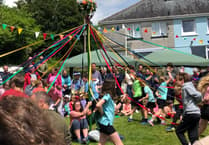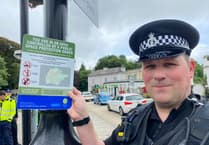A FORMER Royal Marine has devised a series of Dartmoor routes for cross-country runners.
Colin Kirk-Potter, who owns Run Venture, a running and fitness business in Tavistock, has written a book compiling his own multi-terrain trails.
It is believed to be the first time easily accessible trails have been put together all in one place and is an attempt to encourage keen runners to explore Dartmoor and find out more about its features and history.
Colin, a highly experienced runner and mountain leader, said: ‘I always wondered why Dartmoor is the least explored of the national parks and I think it’s to do with its reputation as inhospitable, wild and probably dangerous.
‘And although it’s well walked and mapped and there are lots of guidebooks books for walking and on its history and landmarks, there are no guides for runners.
‘There’s a large community of multi-terrain or fell runners here, but a shortage of maps showing them where to go. So, I’ve compiled my own favourites.’
Colin takes groups running and exploring Dartmoor (as well as to weekends in more extreme terrains such as Snowdonia) and his regular and personal routes all feature in a new book called Dartmoor Trail and Fell Running, which is published on Wednesday, May 17.
He said: ‘I don’t want to only appeal to experienced hardened runners like me and there are a lot out there.
‘I want these routes to be accessible, so they are a range of distances and terrains which people can choose according to their ability and confidence, or indeed, the weather on the day.’
However, there is already an existing market for his book among the keen running community who take part in organised cross-country races on Dartmoor, but who would not otherwise run across the often featureless and sometimes boggy terrain.
Colin has included one of the most popular race routes in the book — the annual Burrator Horseshoe Race from Meavy village.
He said: ‘Most runners who love going-off road will enjoy the races, but when they’ve finished will mostly have no idea of where they’ve been and what they’ve seen.
‘So, that’s where I come in and can guide them safely on that course through my mapped routes. This means runners have the confidence of knowing they won’t get lost if they try to recreate it on their own from guesswork of doing the race only from memory.’
His routes are accompanied by safety advice and illustrations and photography.
One of the most intriguingly titled routes is the so-called WWI Conscientious Objectors’ Road (or Conchie’s Road), more of a ‘path to nowhere’, an unfinished road built by a form of organised labour. Another is at the Dewerstone, where Colin trained as a Commando.





Comments
This article has no comments yet. Be the first to leave a comment.